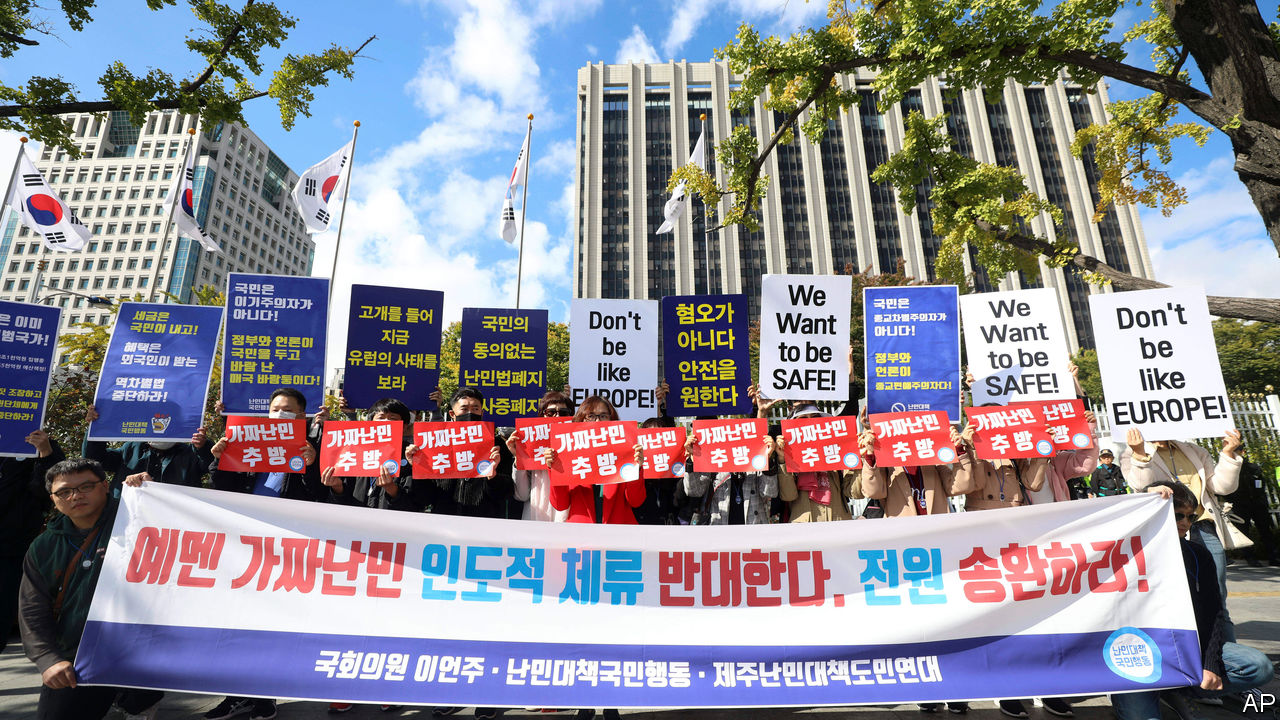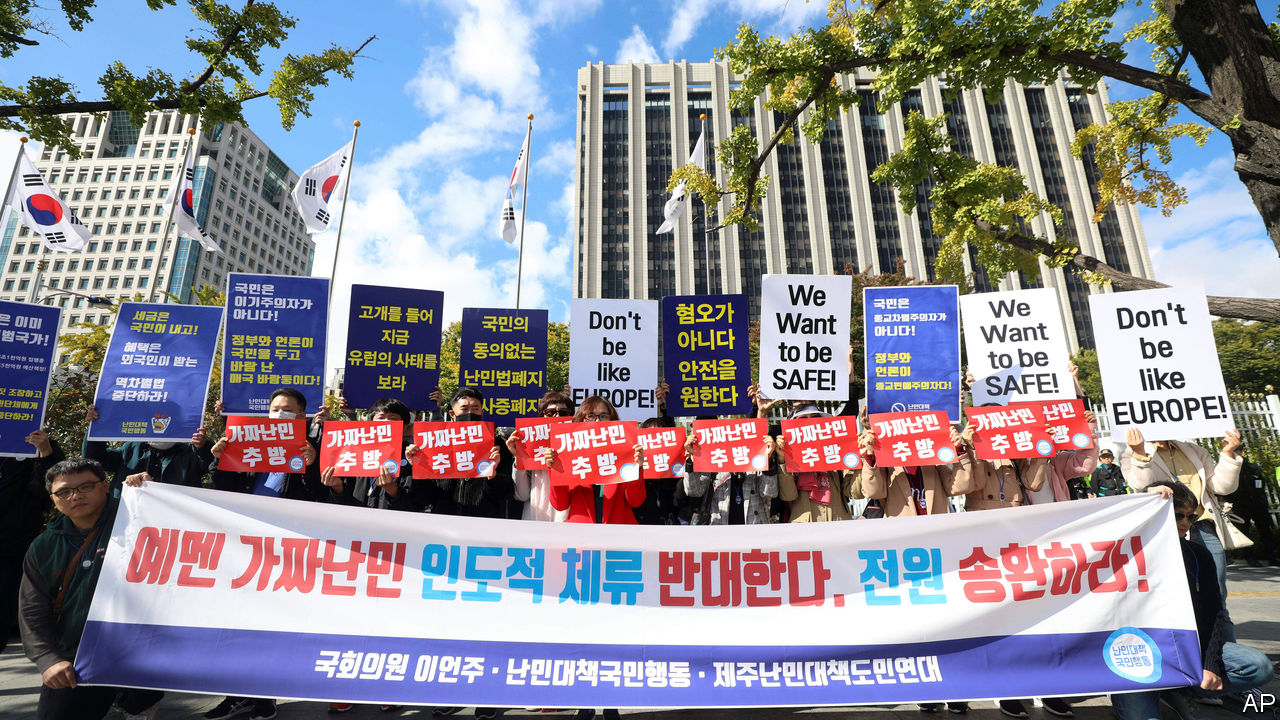
How 500 Yemeni refugees in a Korean resort sparked protests

“DEPORT FAKE refugees”, read the signs held up by protesters in central Seoul in late October. The object of their ire was a group of 500-odd Yemenis who had arrived over the summer on Jeju island, an agreeable resort 500km to the south, to seek asylum from their country’s civil war. “We don’t want them here, and the government is just trying to shut us up,” one protester told a local news agency. On the other side of the square, a group of counter-protesters brandished “refugees welcome” posters.
The protests came in response to the government’s decision to deny 339 of the Yemenis refugee status, but nonetheless allow them to stay temporarily, on humanitarian grounds. They had washed up on Jeju because the government had been trying to promote tourism there by allowing most nationalities to visit without a visa. Soon after they arrived, unfounded rumours began to circulate that they were jihadists, and that some had been involved in the disappearance of half a dozen women on the island. A majority of South Koreans told pollsters that they were against admitting the Yemenis. More than 700,000 people signed a petition asking the government to turn them away and to tighten or abolish laws on asylum.
Although South Korea has signed treaties obliging it to admit genuine refugees, the government largely yielded to the pressure. As well as rejecting the asylum applications, it rescinded visa-free travel to Jeju for people from Yemen and several other mainly Muslim countries, including Pakistan and Somalia. This was typical: last year South Korea received nearly 10,000 applications for asylum but accepted only 121.
The episode is a reminder that, despite increasing diversity, prejudice against outsiders still runs deep in South Korea. Ethnic homogeneity came to be regarded as a bulwark against the erosion of Korean culture during the Japanese occupation in the early 20th century. Schoolchildren are still taught the myth of King Dangun, from whom all Koreans are said to be descended, whose mother was turned from a bear into a woman and taken for a wife by a god as a reward for living off garlic in a cave.
Lessons about racial purity and blood-based nationhood have, however, disappeared from textbooks in recent years. The economy needs workers to do unpleasant jobs that well-educated locals are unwilling to take up. And a desire to prop up the low birth rate means that the government has long encouraged marriages between local men and women from China or South-East Asia (though those numbers have recently dropped). All of this means that South Korea is slowly becoming more diverse. In 2015, the latest year for which data are available, the country had 158,000 naturalised citizens—most of them Asian—nearly three times as many as in 2007. There are now more than 2m foreigners living in the country, twice as many as ten years ago, but still a small number for a rich country of 51m.
But the conflation of race, ethnicity and nationality lingers, says Shin Gi-wook of Stanford University. “The Korean idea of multiculturalism is very assimilationist. It allows people to pretend that a family where the woman is from, say, Malaysia, is not really multi-ethnic.”
Arab and Muslim men, as most of the refugees are, do not seem to be seen as plausible candidates for assimilation. Reports, again unfounded, that an influx of Syrian refugees has created “no-go areas” in European cities have reinforced the hostility, says Shin Kang-hyup of Jeju Residents for the Human Rights of Jeju Refugees, a pressure group. The most vocal opponents of accepting the Yemenis are women under the age of 30, who fear that Muslim refugees are likely to be misogynist and that their admission will undo recent advances in women’s rights.
Many other immigrants also feel less than welcome. The government has begun to do more to aid integration, by providing free language lessons, for instance, but the growing numbers have exacerbated public hostility, reckons Jasmine Lee, who immigrated from the Philippines in 1995. As the first and only immigrant to have been a member of parliament, in 2012-16, she faced intense racist abuse throughout her tenure. “Back when I arrived, there were so few immigrants that most people didn’t care,” she says. “Now, we’re competition, and easy to scapegoat when something goes wrong.”
